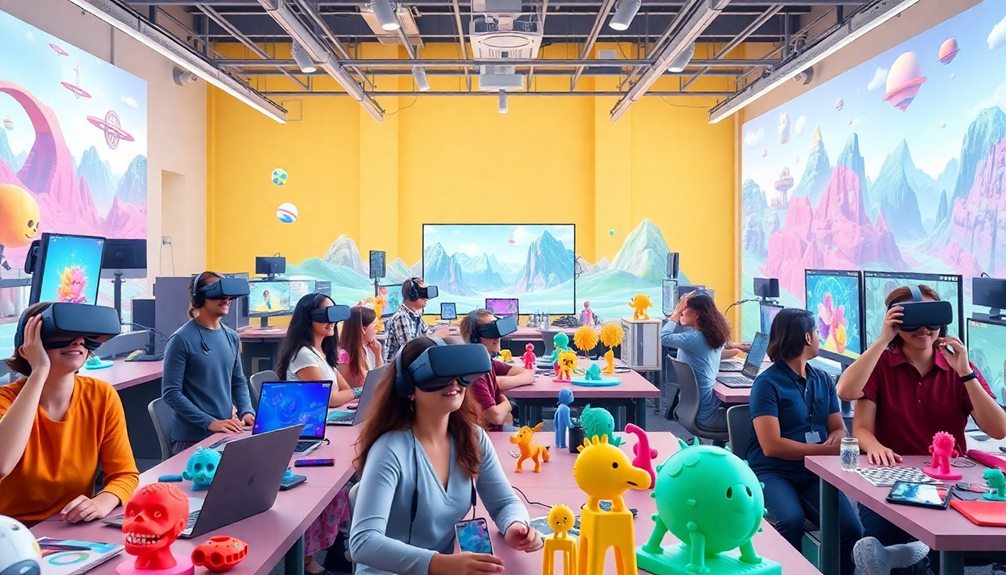You're stepping into a dynamic domain where Extended Reality (XR) content creation blends virtual, augmented, and mixed realities to craft unforgettable experiences. With tools like Unity and Unreal Engine, you can create immersive environments that engage users in real-time. While challenges in programming and hardware requirements exist, the potential applications across industries—from gaming to healthcare—are enormous. As AI integration simplifies workflows and enhances interactivity, you're poised to take advantage of this evolving landscape. Want to explore how these trends can shape your creative endeavors? There's so much more to uncover about XR and its possibilities!
Key Takeaways
- XR content creation combines skills in programming, 3D modeling, and user experience design for immersive experiences.
- Tools like Unity and Unreal Engine provide essential features for developing VR and AR applications.
- High processing demands require powerful hardware for real-time rendering in XR environments.
- Compatibility issues across platforms complicate the development process and may limit accessibility.
- Future advancements in AI and cross-platform capabilities will simplify workflows and enhance user engagement.
Understanding Extended Reality (XR)
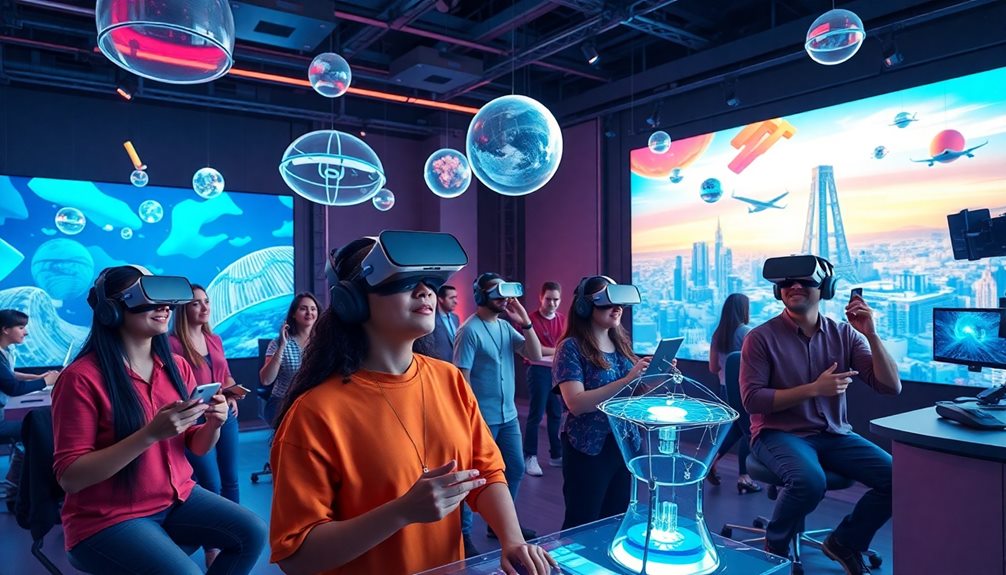
Extended Reality (XR) is a fascinating blend of technologies that includes Virtual Reality (VR), Augmented Reality (AR), and Mixed Reality (MR). These immersive experiences merge physical and virtual environments, offering you unique ways to interact with digital content.
Since their inception, XR technologies have evolved remarkably, especially with the rise of AR applications like Pokémon GO, which popularized this innovative approach in the 2010s. As businesses increasingly adopt AI in Business, they're finding innovative ways to integrate XR for enhanced customer experiences through personalized interactions and immersive storytelling.
XR enhances user engagement through its ability to provide spatial awareness and real-time interaction. This makes it a game-changer in various sectors, such as gaming, education, and healthcare. You can explore interactive learning environments where immersive technologies facilitate skill acquisition and retention.
The Virtuality Continuum concept, developed by Milgram and Kishino, illustrates how XR spans from fully immersive virtual environments to simple augmented overlays, showcasing the flexibility and depth of these applications.
With XR, you can leverage object recognition and spatial awareness to create experiences that resonate deeply with users. By understanding XR's capabilities, you're better equipped to harness its potential in crafting compelling content that captivates and educates.
Key Tools for XR Development
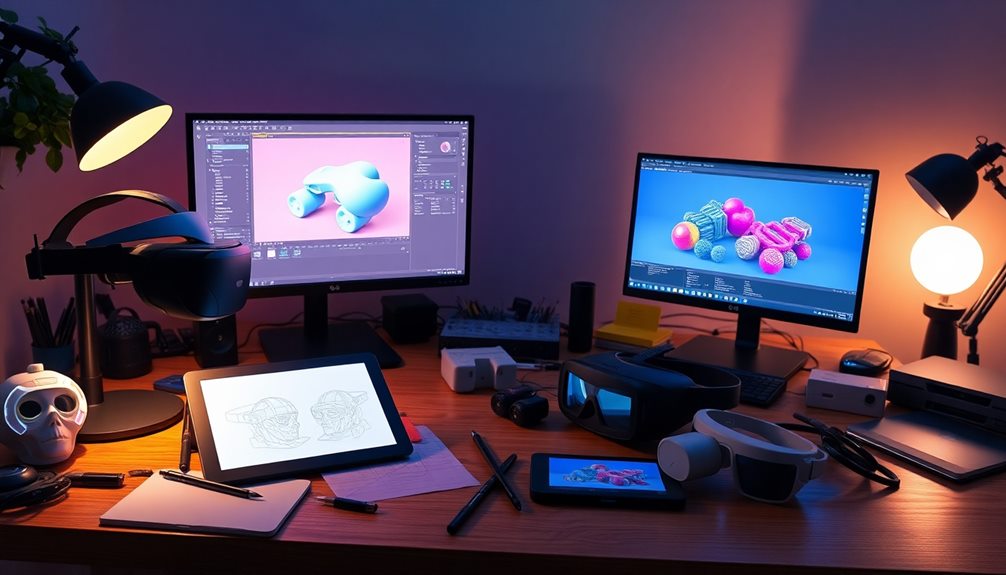
When diving into XR development, you'll find a variety of powerful tools at your disposal. These tools can help you create immersive experiences while simplifying the content creation process.
AI technologies are increasingly being integrated into XR platforms, enhancing the realism and interactivity of experiences, making them more engaging for users. Here's a quick list of some key platforms:
- Unity: This leading platform offers extensive asset libraries and supports real-time ray tracing, making it great for both VR and AR development.
- Unreal Engine: Known for its high-fidelity graphics, Unreal Engine features Blueprints for visual scripting and a vast marketplace for rapid prototyping of XR content.
- ARKit: Designed for iOS, ARKit provides essential frameworks for mobile AR development, utilizing device cameras and sensors for interactive applications.
- ARCore: Similar to ARKit but for Android, ARCore enables you to leverage a device's processing power for creating engaging digital content.
These tools not only facilitate advanced rendering techniques but also open the door to future possibilities like AI-powered virtual reality in e-learning and cloud-based solutions.
Challenges in XR Content Creation
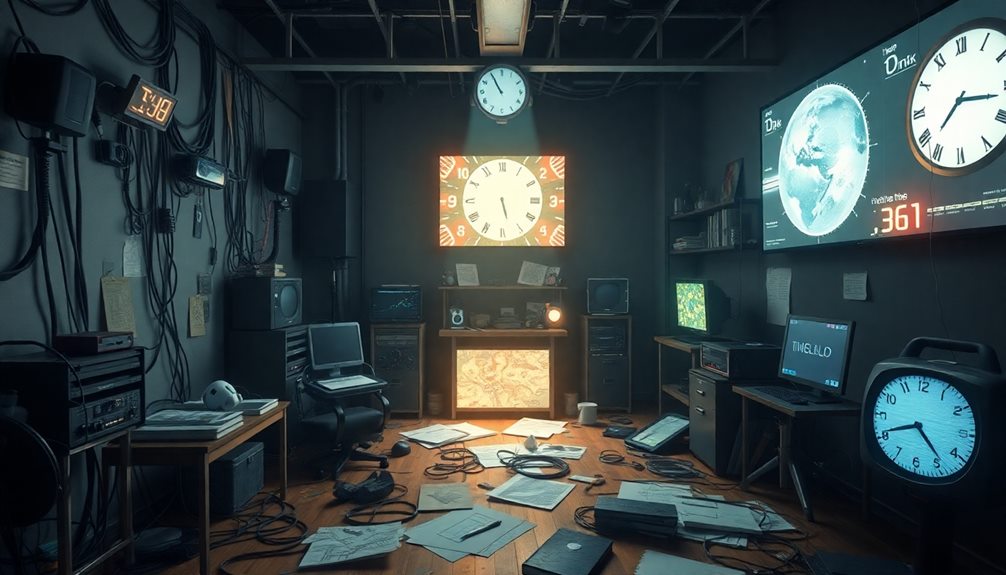
Creating content for XR is no easy feat, as it demands a blend of skills in programming, 3D modeling, and user experience design. This diverse skill set can be a significant barrier for many creators. When you engage with XR technology, you quickly realize that the integration of real-time rendering and advanced graphics can lead to high processing demands. Often, this requires powerful hardware that not all developers can access.
In addition, the rapid evolution of automation technologies drives the need for creators to continuously adapt their skills to stay relevant in the field.
Another challenge lies in ensuring compatibility across various XR platforms, like VR headsets and AR applications. This presents ongoing hurdles in development and maintaining a consistent user experience.
Additionally, accurately synchronizing AR elements with real-world conditions is complex, especially when considering lighting and spatial awareness. These factors can complicate the content creation process and impact the realism of immersive experiences.
Moreover, to maintain a seamless user experience, careful management of potential technical issues is essential. Issues like latency and depth of field can detract from immersion if not properly addressed.
Ultimately, maneuvering through these challenges is vital for producing engaging digital content that captivates users in the ever-evolving landscape of XR.
The Future of XR Technologies
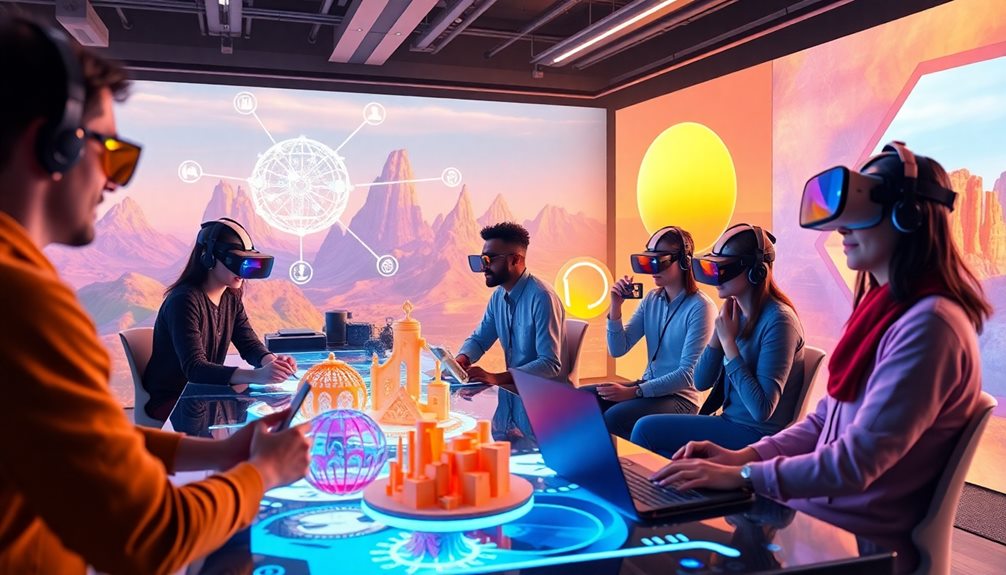
As challenges in XR content creation continue to shape the landscape, the future promises exciting advancements that could revolutionize how creators and users interact with these technologies.
With a focus on cloud-based development, the XR ecosystem is set to become more collaborative and powerful. Here are some key trends to watch for:
- AI Integration: Artificial intelligence will enhance user interactions, creating dynamic and personalized experiences in immersive environments like Augmented Reality (AR) and Virtual Reality (VR).
- Simplified Workflows: Expect streamlined content creation processes, making it easier for both novice and experienced developers to contribute to XR, thereby expanding the creator base.
- Seamless Integration: Cross-platform capabilities will allow XR digital content to function effortlessly across devices, increasing accessibility and user engagement.
- Next-Gen Hardware: Continuous innovation in XR headsets will elevate immersive experiences, solidifying XR's role in entertainment, education, and enterprise sectors.
These advancements promise to redefine the way you engage with XR technologies, making the future of digital content creation brighter and more accessible than ever.
Applications of XR Across Industries
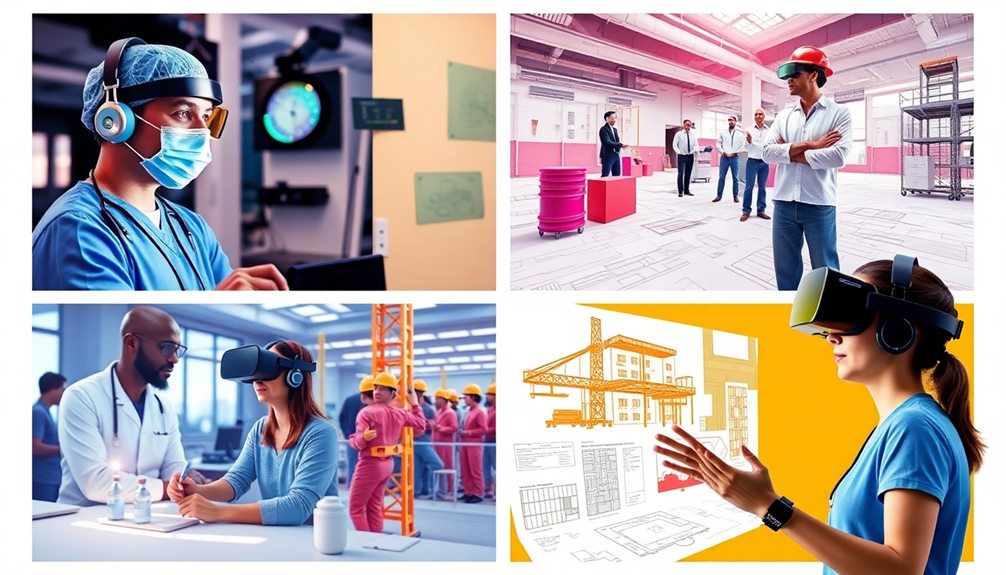
Extended Reality (XR) technologies are reshaping a variety of industries by offering innovative solutions that enhance collaboration, training, and customer engagement.
In architecture, engineering, and construction (AECO), XR applications provide immersive access to project data through interactive 3D models, improving teamwork and decision-making.
In healthcare, you're witnessing realistic surgical training simulations that let medical professionals practice complex procedures in a safe environment, boosting their skills and confidence.
The gaming industry is also capitalizing on XR, creating fully immersive experiences that draw you into a 360-degree simulated environment, enhancing both gameplay and storytelling.
Meanwhile, retail and e-commerce are using augmented reality (AR) to allow customers to visualize products in their own space before making a purchase. This not only reduces return rates but also elevates customer satisfaction.
In education, XR transforms learning by offering personalized, hands-on experiences that cater to various learning styles.
With practical training simulations, you're likely to see improved knowledge retention and engagement.
Frequently Asked Questions
What Is XR Content?
You're exploring an innovative way to blend physical and digital experiences. It combines interactive visuals and sounds to create immersive environments, engaging users in unique ways that enhance learning, entertainment, or training through enthralling interactions.
What Does an XR Engineer Do?
Imagine stepping into a world where creativity knows no bounds. As an engineer, you design, develop, and implement immersive experiences, collaborating with artists to blend technology and artistry, creating magic that captivates and engages users.
What Is an Example of Extended Reality XR?
An example of extended reality is using your smartphone to play Pokémon GO, where you see digital creatures overlaid on your surroundings. It enhances your interaction, merging gaming with the real world in an engaging way.
How Is Content Created in VR?
Creating VR content's like weaving a dream. You'll immerse yourself in game engines, sculpting immersive worlds with tools like Unity. By testing and refining, you'll guarantee your audience feels every heartbeat in that virtual space.
Conclusion
As you immerse yourself in the world of extended reality, remember that it's not just a tech trend—it's a transformative force. Did you know that the XR market is projected to reach a staggering $209.2 billion by 2022? Embracing the right tools and steering through the challenges can set you apart in this evolving landscape. With endless applications across various industries, now's the perfect time to harness the power of XR and shape the future of content creation.
